Flower couple: Gavin Turk and Deborah Curtis tiptoe through the tulips at The Bowes Museum
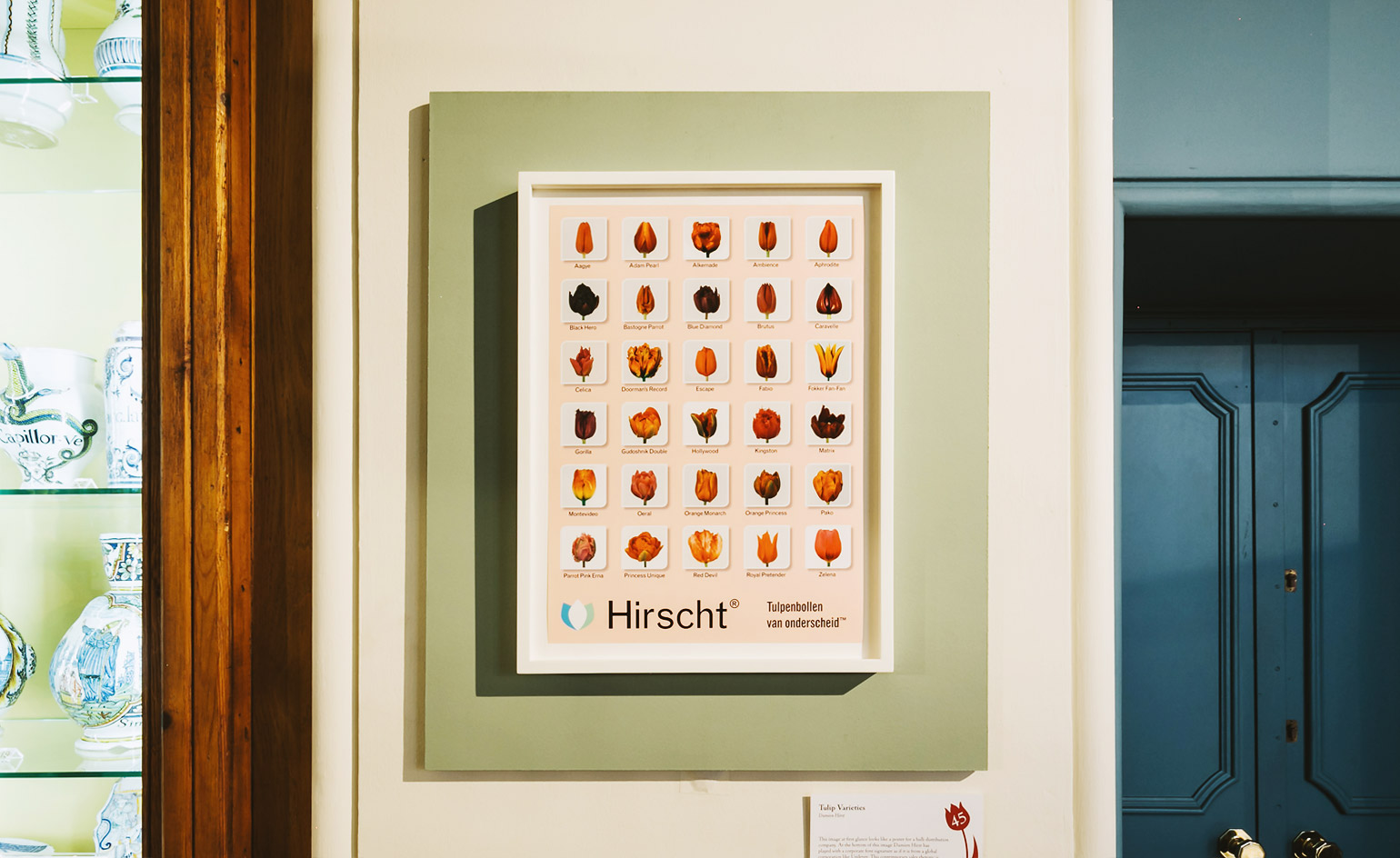
Most of what you see at the Bowes Museum in County Durham is the work of two people: the illegitimate (yet wealthy) son of a British aristocrat, John Bowes, and his beautiful French actress wife, Joséphine. Against the odds, the unconventional pair dedicated their married life to building and filling the Bowes Museum, installing an incongruous home for the arts in the arable landscape, intended at the time to ‘raise the minds’ and perk the intellects of locals. It’s the stuff of fairytales – in everything but a ‘happily ever after’. Neither John or Joséphine lived to see the project completed.
Long succeeding them, this year the museum turns 125. To mark the occasion, its extensive galleries have been handed over to another eccentric pair: artist Gavin Turk and his wife Deborah Curtis, who are presenting a duo of interlinking exhibitions. Curtis has masterminded the zany, child-centric ‘The Clockwork Garden’ educational exhibition, run by charity The House of Fairytales, while Turk presents the second phase of his ‘Turkish Tulips’ exhibition, the first of which was held in Amsterdam’s Museum Van Loon earlier this year.
The 19th-century French-style chateaux, plonked improbably among the fields and hedgerows of the market town of Barnard Castle, might seem an unlikely location to present a show on Amsterdam’s signature flower – especially one coordinated by a mustachioed YBA. Seeing posters across town branded with tulips has left locals puzzled. What relevance does the Dutch floral symbol have with rural County Durham; let alone the curious Bowes?
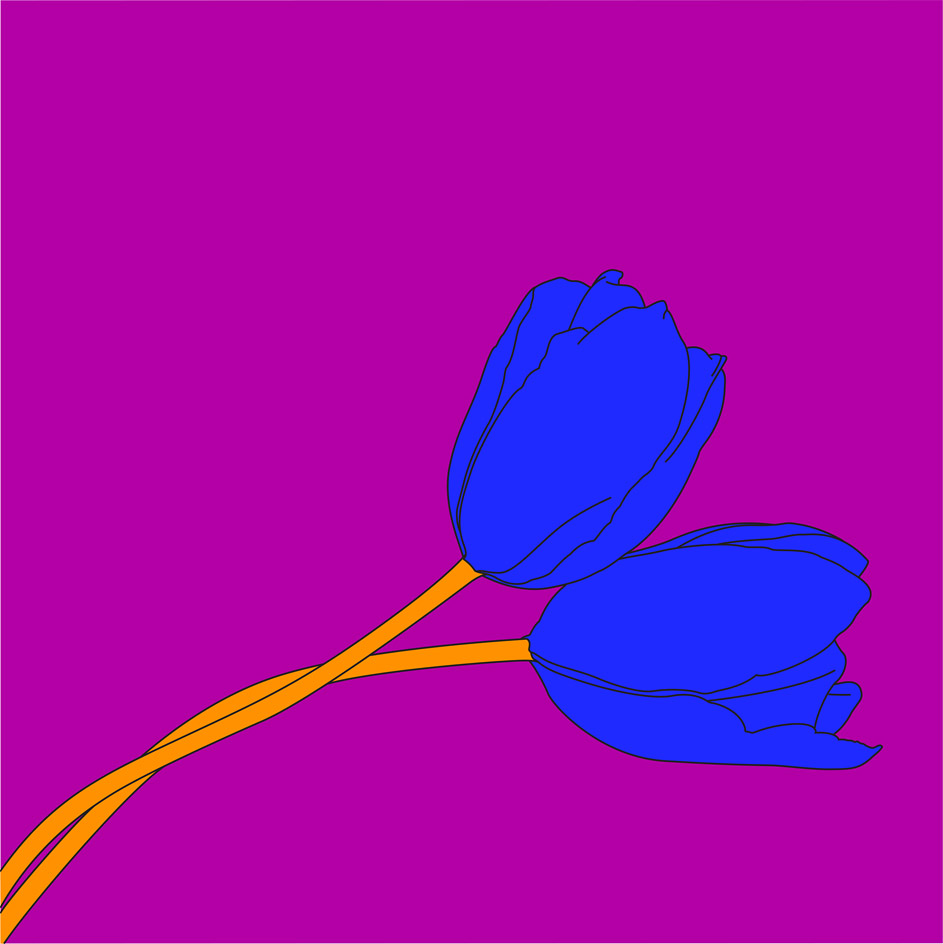
Tulips (after Mapplethorpe), by Michael Craig-Martin, 2016, in the Fashion and Textiles Gallery
Turk is ready with the answers. ‘This is ultimately an exhibition about collecting, which is where the link to the museum comes in,’ he explains. ‘We’re playing on the tulip’s importance to the Bowes’ collection, and its links to trading and the spread of eastern aesthetics.’ The tulip’s tale is one of migration from east to west, originating in the Ottoman Empire, pollinating Europe via the Silk Roads. The flower’s exotic origins and sensual connotations would have appealed to Joséphine, who is known to have had an ‘adventurous taste’, says the Bowes Museum’s fashion and textiles curator, Joanna Hashagen. Besides, by the 18th century, the tulip had become the most painted flower in Europe.
Dotted among shelves overflowing with curiosities – from a two-headed stuffed calf, to a 17th-century square piano, via a penny farthing – we stumble upon contemporary interpretations of tulips by Turk and a string of his art world colleagues, including Damien Hirst, Michael Craig-Martin, Cornelia Parker, Mat Collishaw and Yinka Shonibare.
‘The idea is to get you to look at things – and see things – differently,’ says Turk. ‘The more we looked into the Bowes collection with tulips in mind, the more examples we found.’
The 15,000-strong collection (which includes works by Turner and Goya, along with historical textiles, ceramics and a magnificent silver swan automaton) blooms with countless tulip motifs – provided you know where to look. Turk and Curtis have constructed a handy map illustrating all of the examples currently on display, as well as pinpointing the contemporary pieces they’ve added.
Blink and you'll miss them – which is part of the fun. It's like a treasure hunt through history. A Collishaw photograph is tucked away in Curtis’ ‘The Clockwork Garden’ exhibition, among the children’s activities; while Hirst’s tongue-in-cheek Hirsht poster sits incongruously next to some 18th-century ceramics. ‘We're playing with the art,’ says Curtis. ‘We’re creating environments where adults, as they discover each work, can feel the same kind of wonder that children feel. We’re trying to counteract the trepidation some people might feel when coming into an art gallery.’ It’s a refreshing approach. The pioneering, philanthropic Bowes would have thoroughly approved.
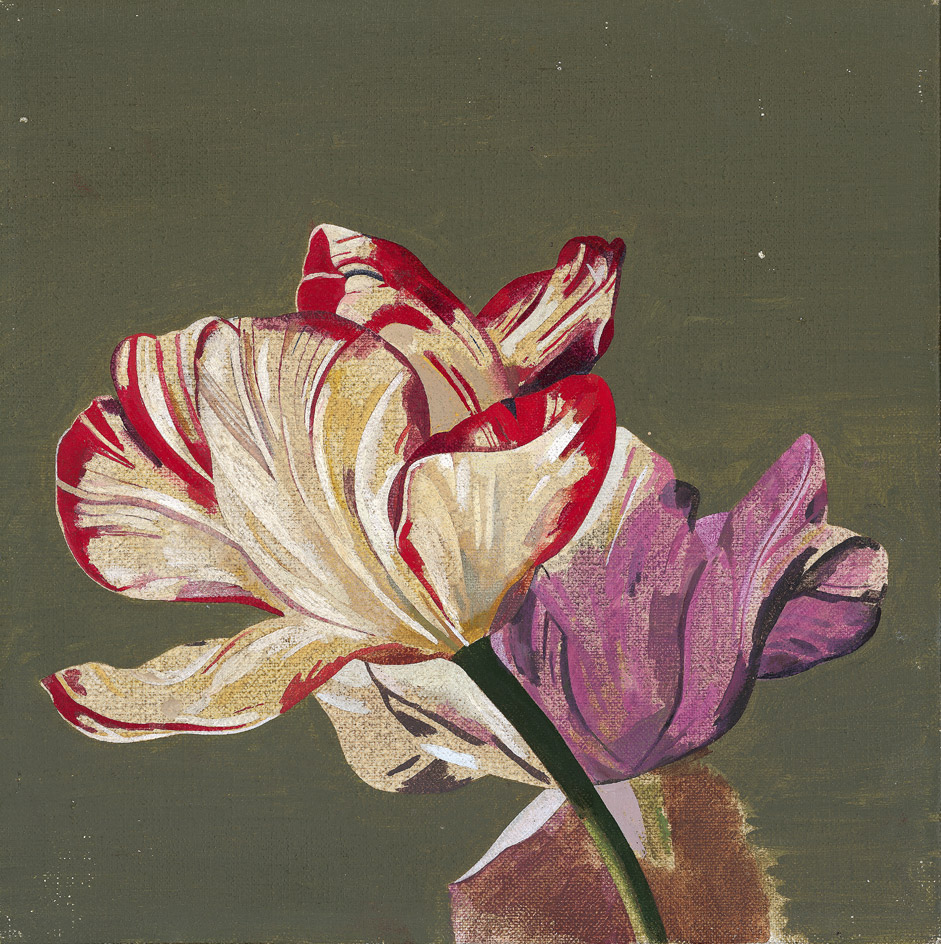
Tulips after Van Brussel, Flowers in a vase, by Sir Peter Blake, 1995-96, in the Warwick cabinet
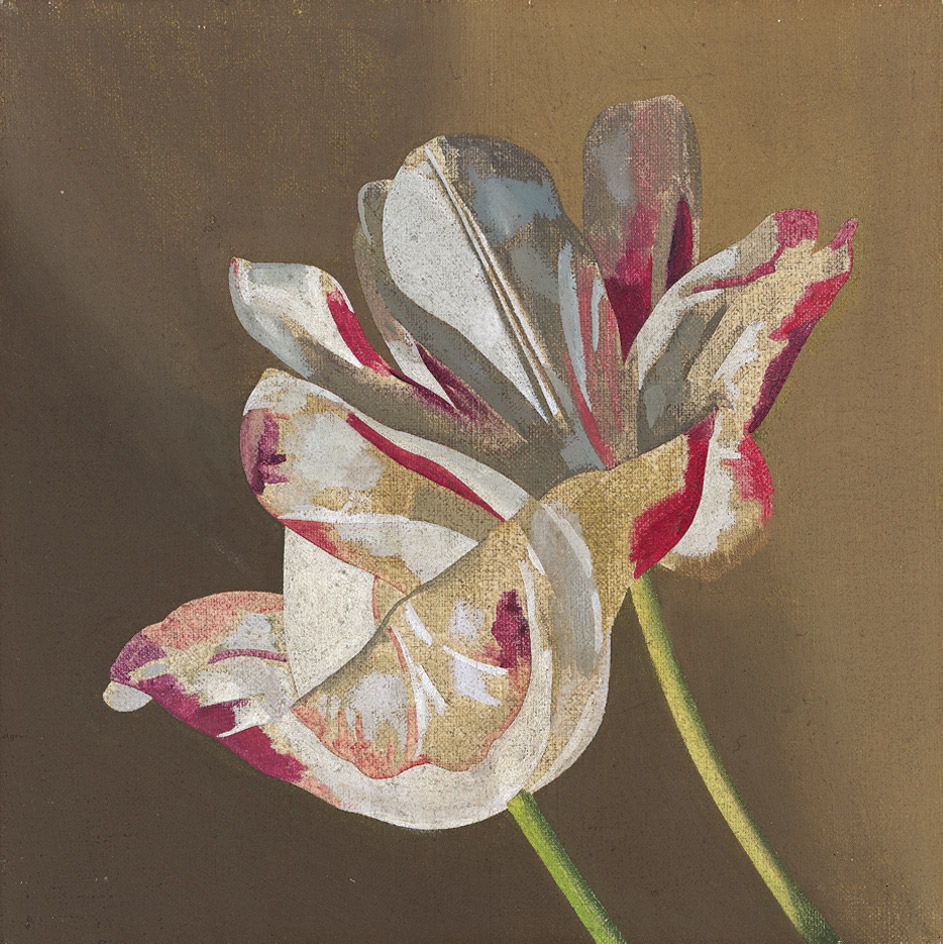
Tulips after Van Brussel, Flowers in a vase, by Sir Peter Blake, 1995-96, in the Warwick cabinet
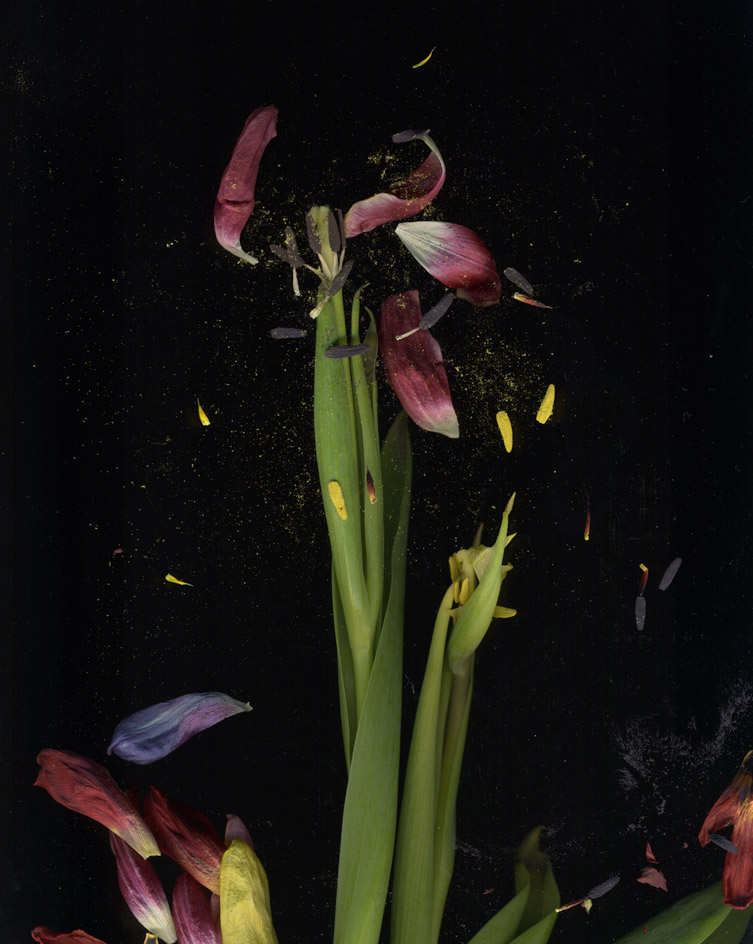
Tulip Mania, by Mat Collishaw, 2017, in the Picture Galleries

Back Tulip, by Cornelia Parker, 2016, in the Silver and Metals Gallery
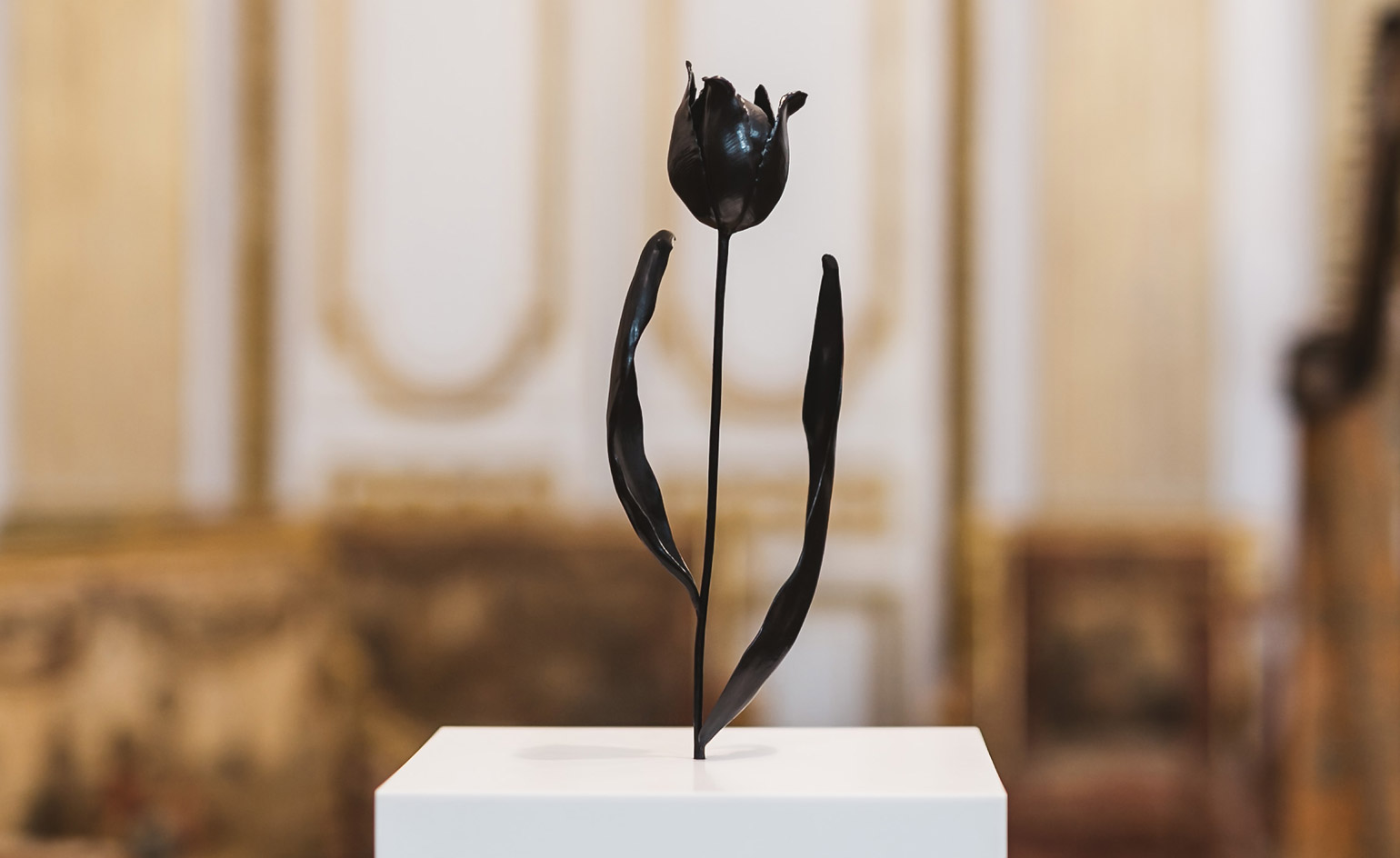
Black Tulip, after Judith Leyster, by Rob and Nick Carter, 2012
INFORMATION
‘The Clockwork Garden’ and ‘Turkish Tulips’ are on view until 5 November. For more information, visit the Bowes Museum website
ADDRESS
Bowes Museum
Barnard Castle
County Durham DL12 8NP
Wallpaper* Newsletter
Receive our daily digest of inspiration, escapism and design stories from around the world direct to your inbox.
Elly Parsons is the Digital Editor of Wallpaper*, where she oversees Wallpaper.com and its social platforms. She has been with the brand since 2015 in various roles, spending time as digital writer – specialising in art, technology and contemporary culture – and as deputy digital editor. She was shortlisted for a PPA Award in 2017, has written extensively for many publications, and has contributed to three books. She is a guest lecturer in digital journalism at Goldsmiths University, London, where she also holds a masters degree in creative writing. Now, her main areas of expertise include content strategy, audience engagement, and social media.
-
 Extreme Cashmere reimagines retail with its new Amsterdam store: ‘You want to take your shoes off and stay’
Extreme Cashmere reimagines retail with its new Amsterdam store: ‘You want to take your shoes off and stay’Wallpaper* takes a tour of Extreme Cashmere’s new Amsterdam store, a space which reflects the label’s famed hospitality and unconventional approach to knitwear
By Jack Moss
-
 Titanium watches are strong, light and enduring: here are some of the best
Titanium watches are strong, light and enduring: here are some of the bestBrands including Bremont, Christopher Ward and Grand Seiko are exploring the possibilities of titanium watches
By Chris Hall
-
 Warp Records announces its first event in over a decade at the Barbican
Warp Records announces its first event in over a decade at the Barbican‘A Warp Happening,' landing 14 June, is guaranteed to be an epic day out
By Tianna Williams
-
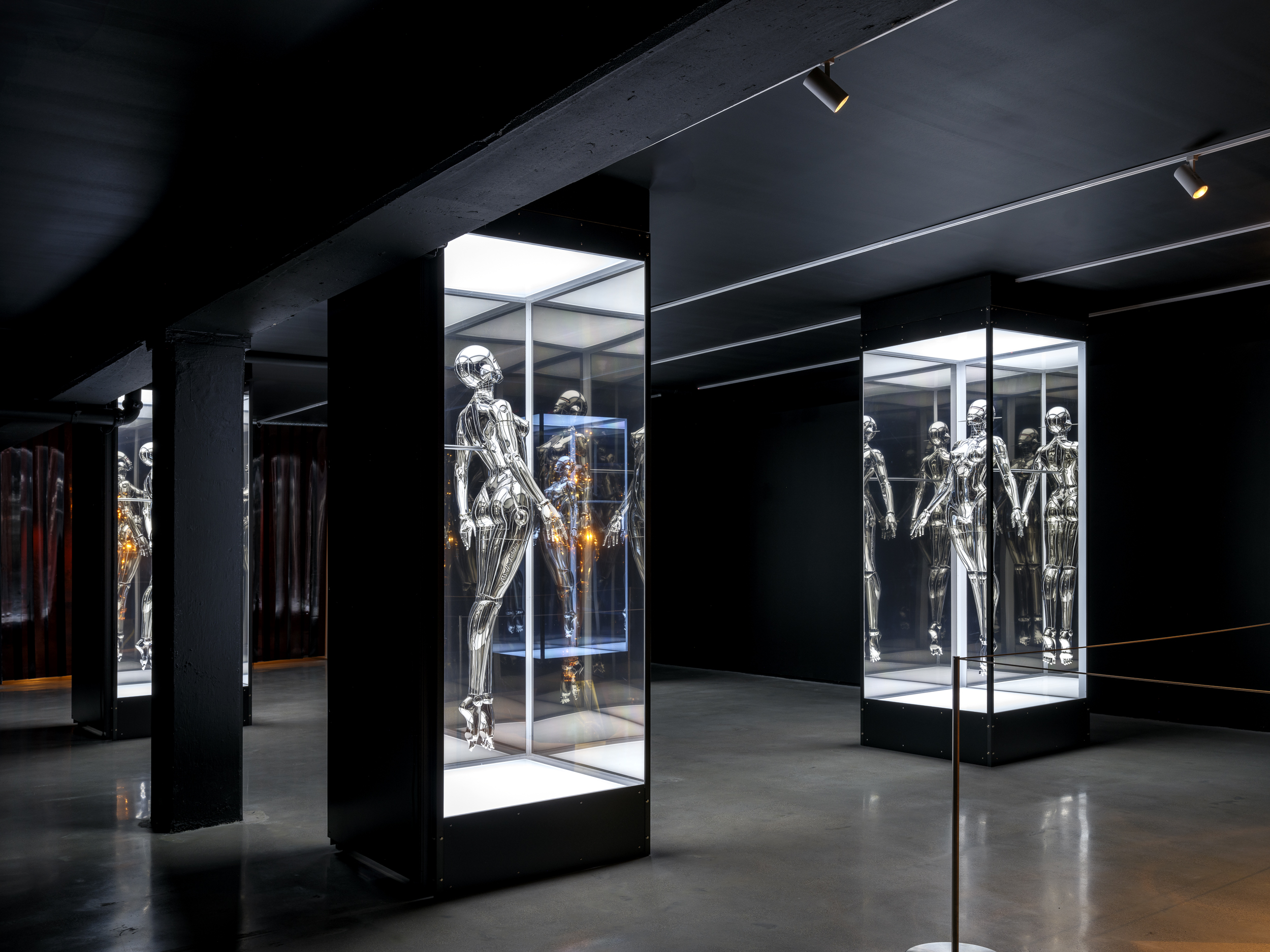 Miami’s new Museum of Sex is a beacon of open discourse
Miami’s new Museum of Sex is a beacon of open discourseThe Miami outpost of the cult New York destination opened last year, and continues its legacy of presenting and celebrating human sexuality
By Anna Solomon
-
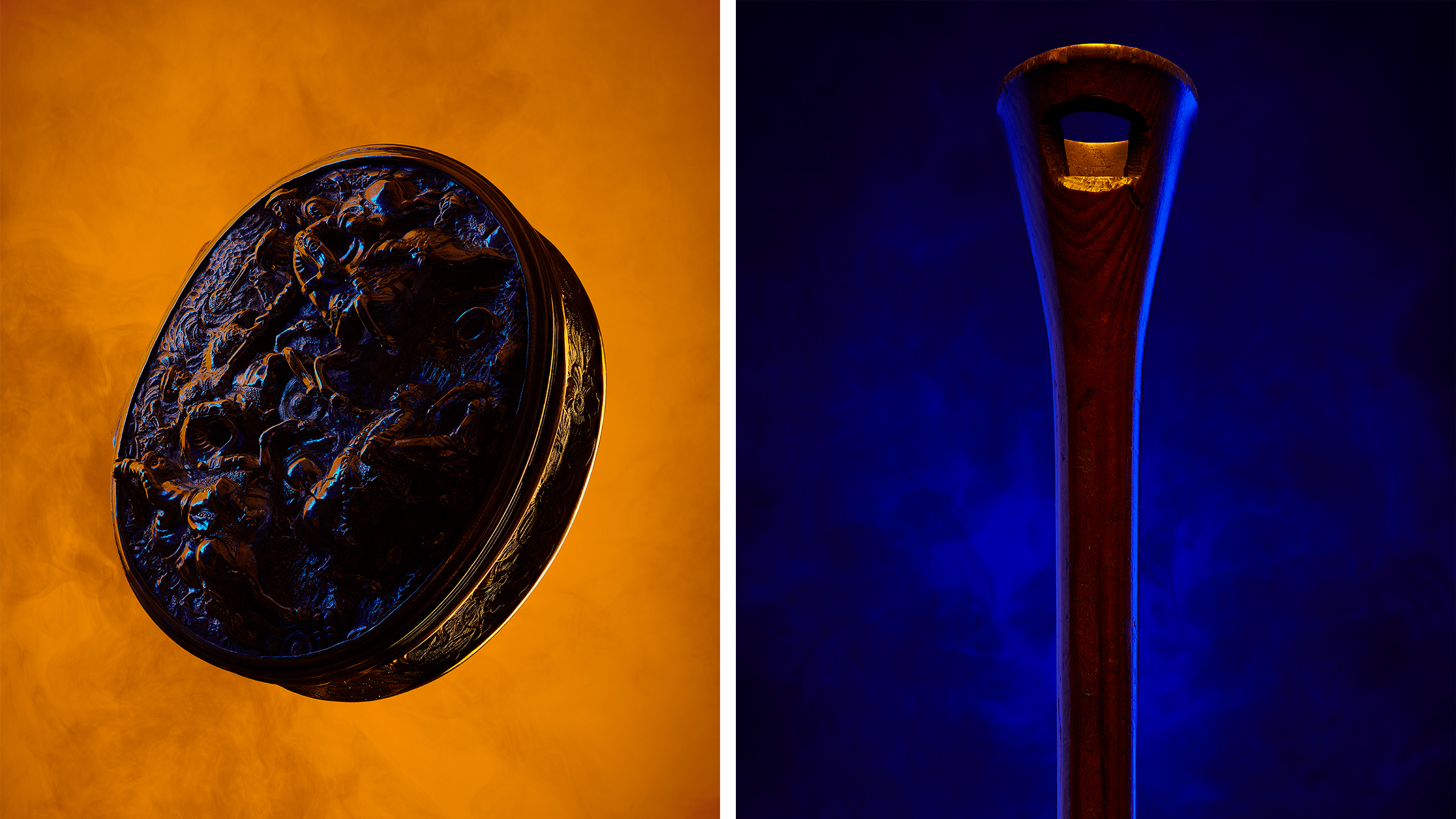 Royal College of Physicians Museum presents its archives in a glowing new light
Royal College of Physicians Museum presents its archives in a glowing new lightLondon photography exhibition ‘Unfamiliar’, at the Royal College of Physicians Museum (23 January – 28 July 2023), presents clinical tools as you’ve never seen them before
By Martha Elliott
-
 Museum of Sex to open Miami outpost in spring 2023
Museum of Sex to open Miami outpost in spring 2023The Museum of Sex will expand with a new Miami outpost in spring 2023, housed in a former warehouse reimagined by Snøhetta and inaugurated with an exhibition by Hajime Sorayama
By Harriet Lloyd-Smith
-
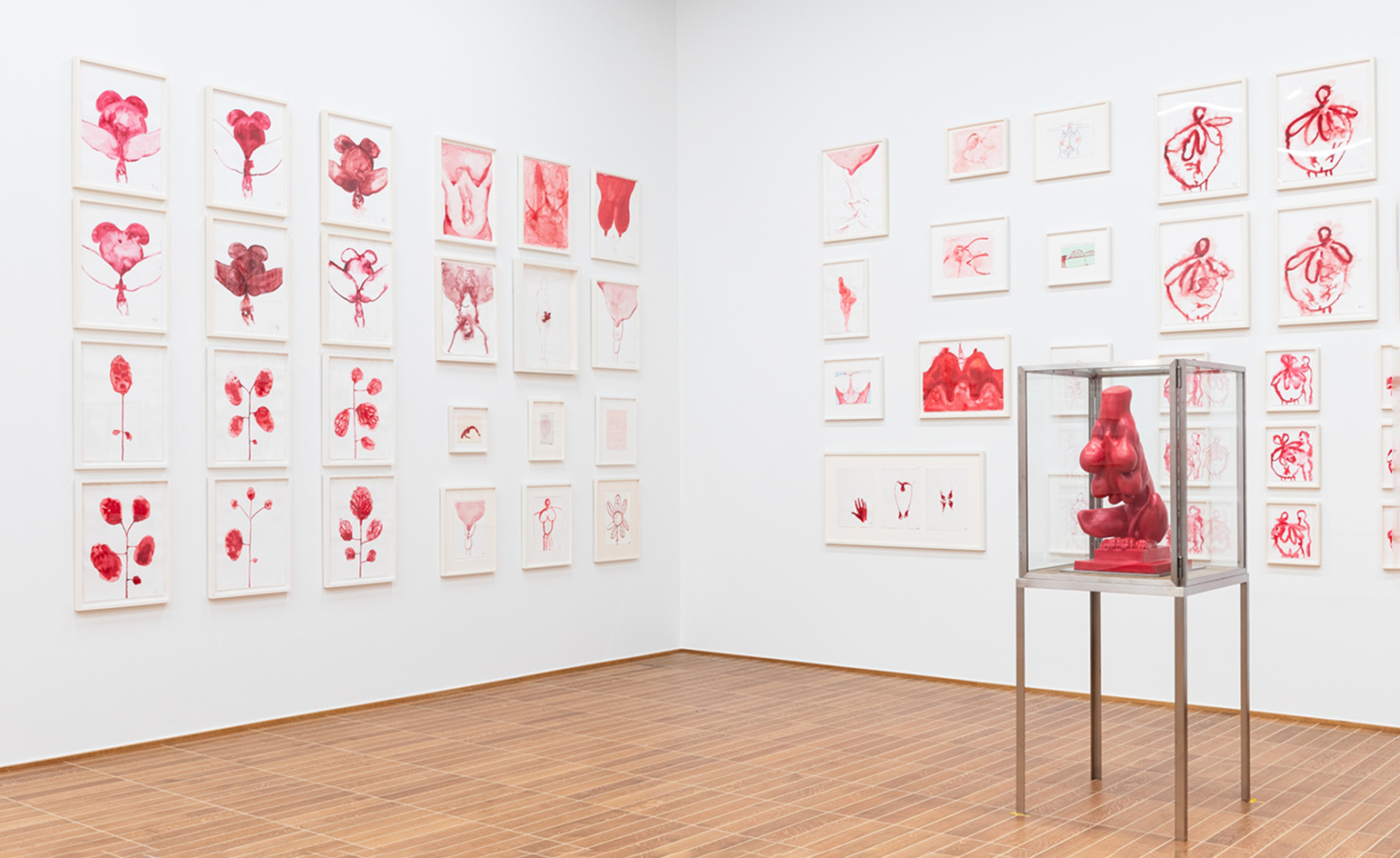 Jenny Holzer curates Louise Bourgeois: ‘She was infinite’
Jenny Holzer curates Louise Bourgeois: ‘She was infinite’The inimitable work of Louise Bourgeois is seen through the eyes of Jenny Holzer in this potent meeting of minds at Kunstmuseum Basel
By Amah-Rose Abrams
-
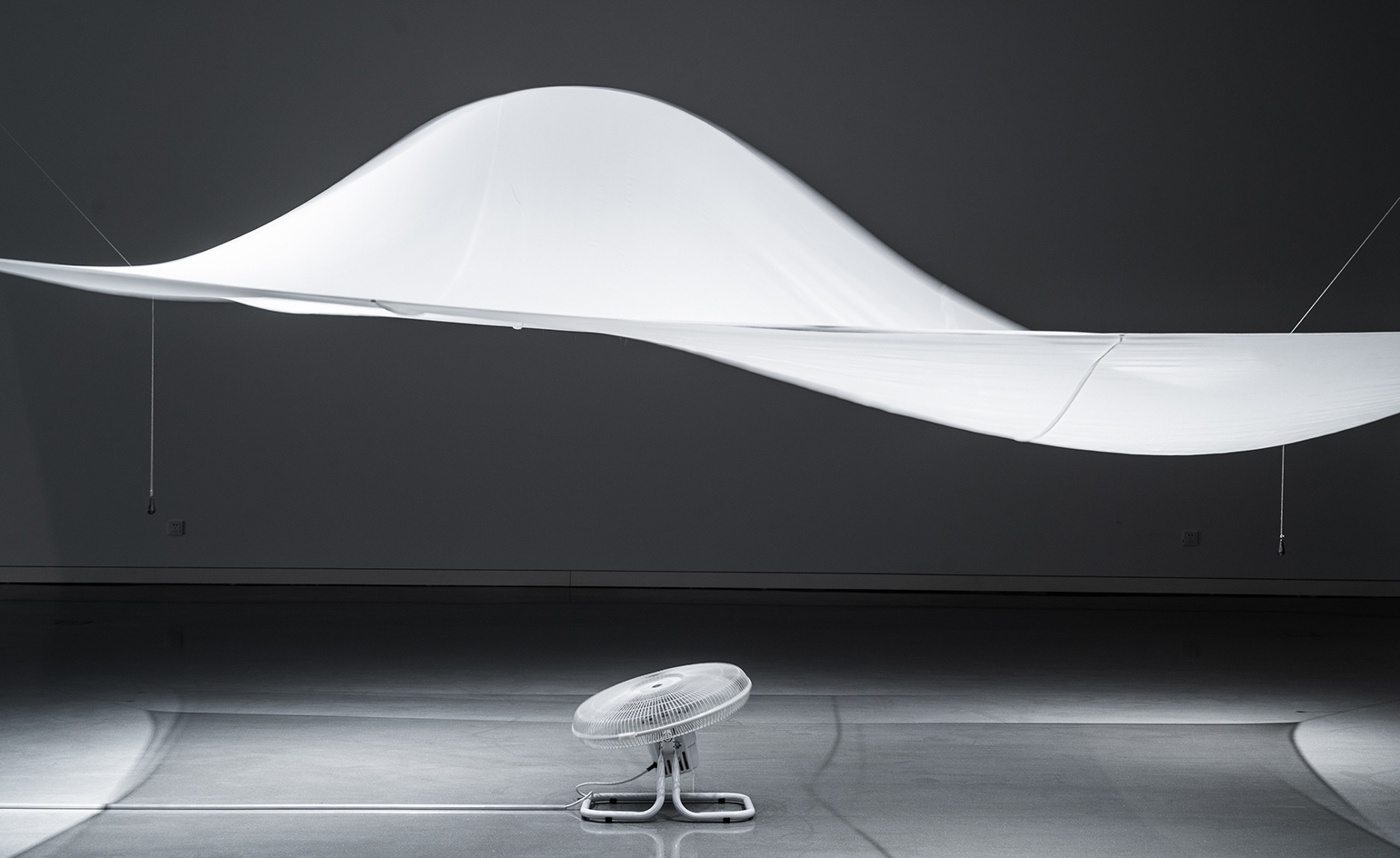 ‘A Show About Nothing’: group exhibition in Hangzhou celebrates emptiness
‘A Show About Nothing’: group exhibition in Hangzhou celebrates emptinessThe inaugural exhibition at new Hangzhou cultural centre By Art Matters explores ‘nothingness’ through 30 local and international artists, including Maurizio Cattelan, Ghislaine Leung, Hiroshi Sugimoto, Liu Guoqiang and Yoko Ono
By Yoko Choy
-
 Three days in Doha: art, sport, desert, heat
Three days in Doha: art, sport, desert, heatIn our three-day Doha diary, we record the fruits of Qatar’s cultural transformation, which involved Jeff Koons, a glass palace of books, and a desert sunset on Richard Serra
By Harriet Lloyd-Smith
-
 Hong Kong’s M+ Museum to open with six thematic shows
Hong Kong’s M+ Museum to open with six thematic showsAsia’s first global museum of contemporary visual culture will open on 12 November in Hong Kong’s West Kowloon Cultural District, with six themed shows spanning art, design and architecture
By Harriet Lloyd-Smith
-
 Maurizio Cattelan invites the who’s who of culture to read bedtime stories
Maurizio Cattelan invites the who’s who of culture to read bedtime storiesThe subversive Italian artist has recruited the likes of Iggy Pop, Takashi Murakami and Joan Jonas to read bedtime stories in a new digital project for the New Museum
By Pei-Ru Keh